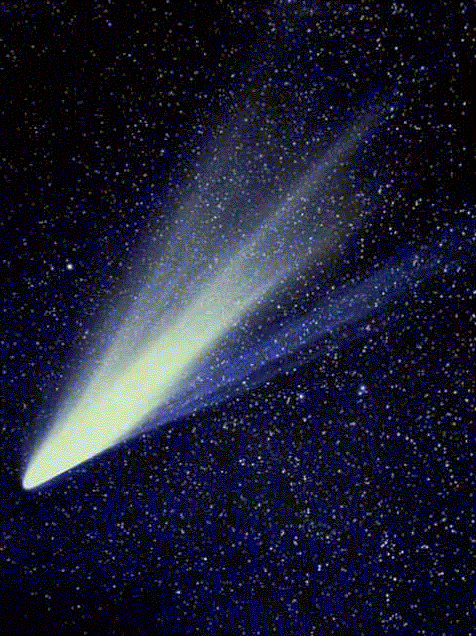
From The Cosmic Perspective by Bennett et al.
Pluto is the smallest planet in our solar system, being smaller than the 7 largest planetary moons. It is "different" for several reasons:

From The Cosmic Perspective by Bennett et al.

From the Hubble Space Telescope.
Pluto was discovered in 1930 by Clyde Tombaugh, who was working at the Lowell Observatory in Flagstaff, AZ. It is the only planet discovered by an American. People thought that there might be another planet beyond the orbit of Neptune that was perturbing its orbit; the calculations were all wrong, but thanks to a careful search, Tombaugh discovered Pluto anyway.


Due to its odd nature (see above), Pluto is sometimes categorized as a Kuiper Belt Object (we will talk more about these objects this week). However, it has historically been categorized as a planet. This subject is still under debate, although here is an official statement claiming that Pluto will remain a planet.
Pluto's average density is 2 g/cm3, indicating that it is made of rock and ice. Clearly it is quite different from the gas giants, and in fact it more closely resembles the icy satellites of the outer solar system or the cometary nuclei of the Kuiper Belt.

From Hubble Space Telescope.

"True color" image of Pluto by Young et al., using Hubble Space Telescope data.

From Hubble Space Telescope.
Pluto's moon, Charon, was discovered in 1978, after careful examination of some Pluto images showed a "bump" on its side.

USNO Photograph.
The New Horizons mission is planned as the first spacecraft exploration of Pluto and Charon. It is scheduled for launch in early 2006, with an arrival date at Pluto of 2015. It will fly by Pluto and Charon and continue on into the Kuiper Belt to study an object there.
Comets are small, irregularly shaped objects whose orbital semi-major axis (average distance to the Sun) takes them beyond the orbit of Pluto. They are made of ice and rock ("dirty snowballs"), and they change brightness dramatically as they approach the Sun.
Comets are of tremendous interest to astronomers because they hold the clues to the conditions in the very early solar system. They represent the unaltered material out of which the [outer] solar system formed, and therefore can tell us about star and planet formation and evolution.
There are several parts of a comet, shown in the figure below:


The different parts of the comet vary tremendously in size:
Comets come from two different reservoirs:
The Kuiper Belt is located beyond the orbit of Neptune (~ 30-100 AU), and the objects there orbit the Sun in the plane of the planets. The short period comets (orbital period ~ 100 yrs or less) are thought to originate in the Kuiper Belt.
The Oort Cloud is a spherical cloud of comets located much farther away: few hundred to thousands of AU's away. These comets orbit the Sun from any direction, and are the long-period comets.